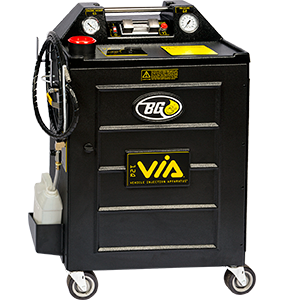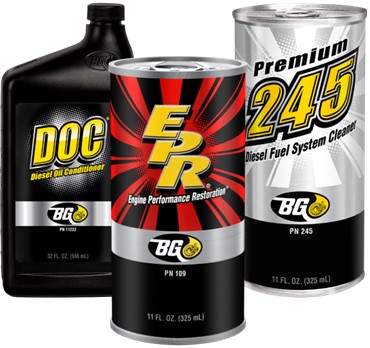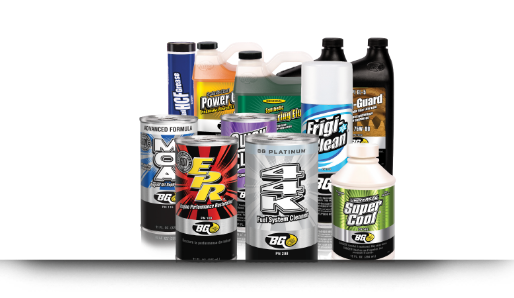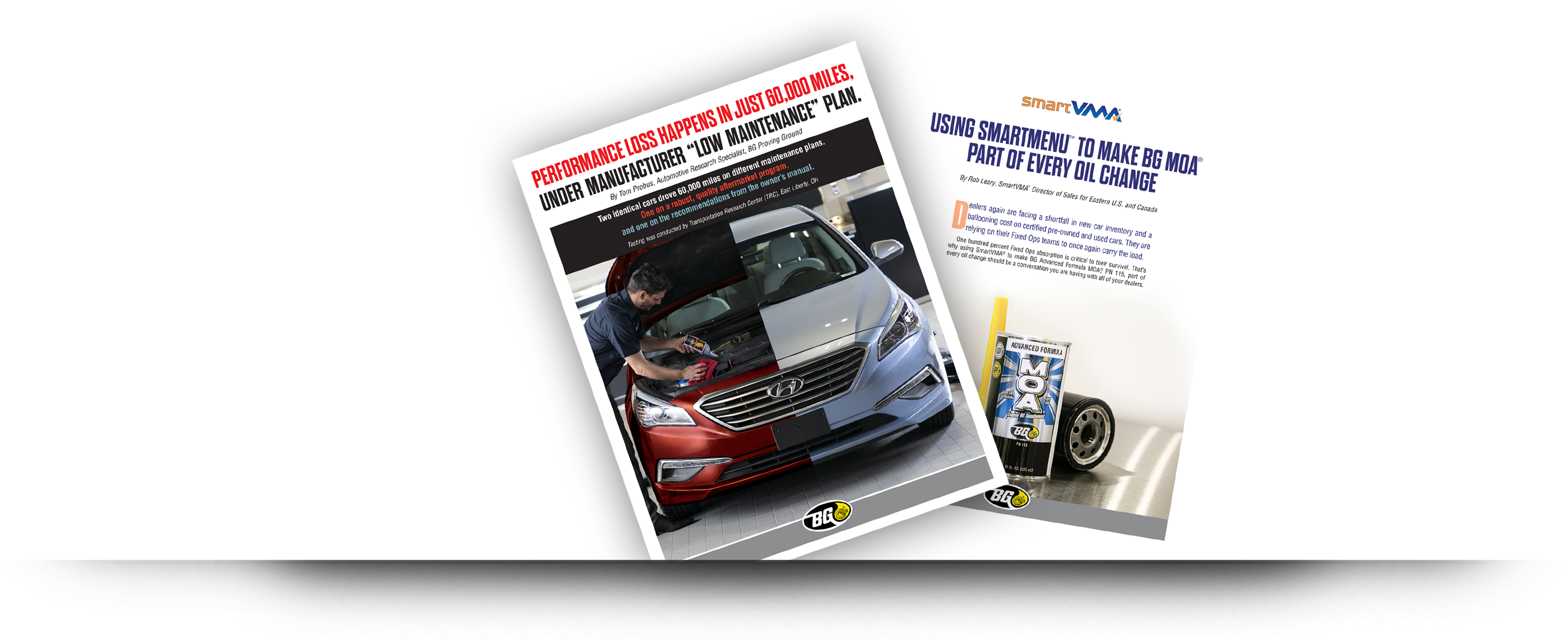
The diesel particulate filter’s (DPF) primary job is to remove the soot from the exhaust gas, to reduce air pollution. We all know what happens when soot collects in the induction system (performance and fuel efficiency drop), but what happens when soot collects in the DPF?
The solution
The BG Technology Department saw this problem as an opportunity, and after two years of research and development, became the first to market with a viable solution. The BG DPF & Emissions System Restoration Service uses groundbreaking technology to restore the DPF, while simultaneously performing an effective intake system cleaning.

With the touch of a button and the turn of a knob, the BG 12Q VIA®, PN 9300, is the first piece of equipment to have the ability to command and control regeneration, which is key to cleaning the emissions system.
Installed through the BG 12Q VIA®, the BG DPF & Emissions System Restoration, PN 258, effectively disperses hydrocarbons from the intake all the way through to the emissions system to be burned off and sent out the tailpipe.
“It’s also essential to follow this intense cleanup service with a BG Performance Oil Change with BG EPR®, BG DOC and BG 245.” advises David. “Prevent DPF clogging by performing this oil change service at each oil change interval!”

Published in Fall 2014 Blend’r.






